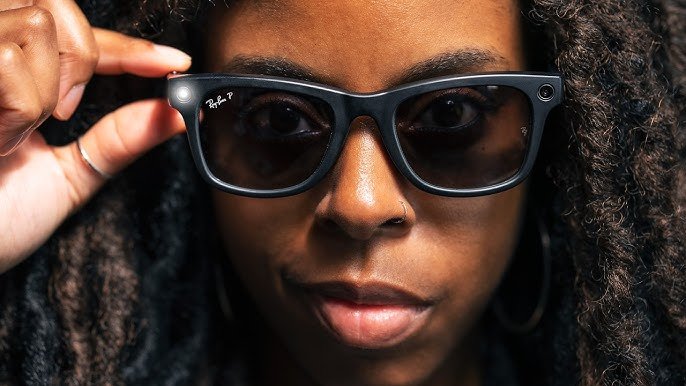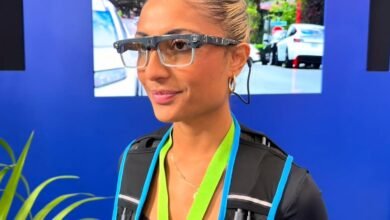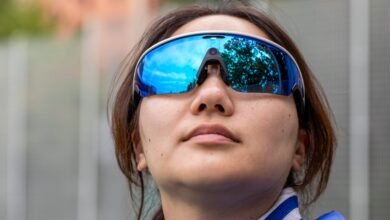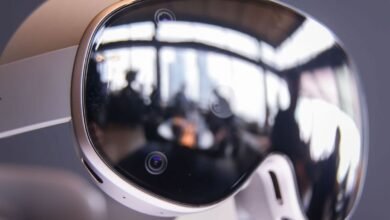Meta-Ray-Ban Glasses Set for Wider Field of View, Says Maker

▼ Summary
– Schott is likely the manufacturer of waveguide optics in Meta’s Ray-Ban Display glasses, partnering with Lumus who designs the geometric reflective waveguides.
– Schott has achieved mass production of waveguides, making it the first company to produce geometric reflective waveguides at consumer scale.
– The company’s waveguide technology is efficient in light and energy, enabling smaller, cooler displays and supporting future immersive wide field-of-view devices.
– Schott’s strategic investments in manufacturing and partnerships have positioned it as a leading optics provider for smart and AR glasses.
– True AR glasses require advancements beyond optics, including better battery life, processing power, and higher resolution displays to support wider fields-of-view.
The next generation of Meta-Ray-Ban smart glasses is poised for a significant visual upgrade, with the manufacturer indicating that a much wider field of view is on the horizon. Currently offering a static 20-degree perspective, the underlying waveguide technology is reportedly capable of scaling up to support truly immersive experiences. This advancement hinges on a crucial manufacturing partnership that has successfully brought this component to a consumer scale for the first time.
Schott, a leader in advanced optics, appears to be the company behind the waveguides in the current Ray-Ban models. While Meta has not officially confirmed the supplier, Schott announced its mass-production capabilities for geometric reflective waveguides just one day before the product’s launch. This strategic move positions the company as a frontrunner in the optics supply chain for the burgeoning smart glasses market.
Years of preparation have led to this moment for Schott. The company entered a strategic partnership with Lumus, the designer of the geometric reflective waveguides, back in 2020. Further solidifying its commitment, Schott opened a new factory last year explicitly to boost its capacity for producing high-quality components for international tech firms, including those in the augmented reality sector. These investments are now yielding tangible results, granting Schott a claim that others cannot yet make: proven mass-market readiness and scalability for this critical technology.
Dr. Ruediger Sprengard, Senior Vice President for Augmented Reality at Schott, emphasized the importance of this development. He stated that this breakthrough in industrial production adds a crucial missing piece to the AR landscape. For years, the goal of creating lightweight, powerful smart glasses available at scale seemed distant. By offering these waveguides in volume, Schott is helping its partners cross the threshold into creating genuinely wearable products that deliver an immersive experience.
Looking ahead, the company asserts that its geometric reflective waveguide technology is designed to scale far beyond the current 20-degree field of view. According to Schott, this technology outperforms competing optical solutions in AR due to its superior light and energy efficiency. These attributes allow device designers to create fashionable glasses intended for all-day use. The company boldly claims that geometric reflective waveguides are not only the best option for small fields of view but also the only viable option for achieving wide fields of view. This claim is supported by Lumus’s own demonstrations, which have included waveguides with a 50-degree field of view.
The success of the Schott and Lumus partnership in securing this position likely stems from a key advantage: light efficiency. Many competing waveguide technologies rely on diffractive optics, which have certain benefits but are less efficient with light. This efficiency is paramount in glasses-sized devices where microdisplays must be incredibly small and power-frugal. High light efficiency allows for smaller, cooler, and less power-hungry displays, a critical consideration given the severe space constraints. This challenge becomes even more pronounced as the field of view widens, as spreading light over a larger area reduces its apparent brightness.
However, the pathway to true AR glasses with a wide field of view involves more than just advanced optics. Devices like Meta’s advanced Orion prototype, showcased in 2024, reveal the other hurdles that remain. A major challenge is battery life and processing power. The Orion prototype functioned by offloading much of its computation and battery requirements to a separate wireless puck. For Meta to launch a self-contained, full-AR product without an external device, it will require significantly smaller and more efficient chips than are currently available.
Furthermore, display technology itself must evolve to keep pace with these optical advancements. The current Ray-Ban glasses use a relatively low-resolution 0.36-megapixel display. This appears sharp because the image is confined to a narrow 20-degree field. To maintain the same image quality across a wider vista, both the brightness and the resolution of the display must increase dramatically. With little room to make the physical display larger, this means engineers must pack smaller, brighter pixels into the same tiny area, a formidable technical challenge that involves improving two inversely-related characteristics simultaneously.
(Source: Road to VR)




